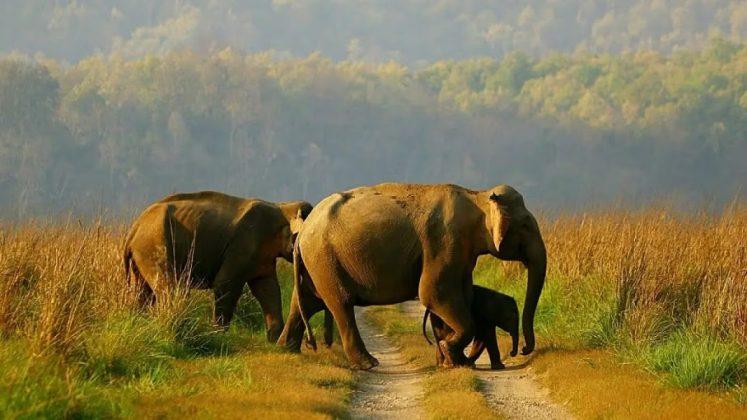A recent report by the Union Environment Ministry has shed light on the state of elephant corridors in India. According to this comprehensive report titled “Elephant Corridors of India,” the country boasts at least 150 elephant corridors, spread across 15 range-states, and encompassing four major elephant-bearing regions. This is a significant increase from the 88 corridors identified in the 2010 Elephant Task Force report, known as the “Gajah report.” This expanded understanding of elephant corridors signifies the evolving challenges and the growing awareness of the importance of conserving these vital pathways.
What Are Elephant Corridors?
Elephant Corridors are land strips that enable the movement of elephants between two or more viable habitat patches. However, it’s crucial to note that corridors leading elephants into human-dominated areas without connecting to suitable habitats are not considered true elephant corridors. Such misdirection can lead to increased human-elephant conflict, putting both human and elephant lives at risk.
Elephant Corridors of India: Regional Distribution
West Bengal emerges as the frontrunner in this report, with a staggering 26 elephant corridors, accounting for over 17 percent of the total corridors in India. Among the four major elephant-bearing regions in the country, the east-central region tops the list with 52 corridors, followed by the northeast region with 48, and the southern region with 32. In contrast, the northern region has the lowest number of elephant corridors at 18.
Elephant Corridors of India: Transnational Corridors and Expanding Ranges
The report also highlights the presence of six transnational elephant corridors between India and Nepal, primarily located in Uttar Pradesh. It further points out states where elephants have recently expanded their ranges, including regions in Maharashtra, Madhya Pradesh, and Andhra Pradesh. In these areas, assessing the long-term viability of habitats and adopting a data-driven approach to identify corridors is crucial.
Elephant Corridors of India: Challenges and Next Steps
The report also highlights some concerning findings. It reveals that the intensity of elephant use has increased in 59 of the identified corridors, remained stable in 29, and decreased in 29 others. Additionally, 15 of these corridors have been impaired and require restoration efforts to restore functionality, emphasizing the urgent need for conservation actions.
Furthermore, information regarding the current use of 18 corridors by elephants remains unavailable, signifying a gap in our understanding of elephant behavior and movement patterns in these areas.
Collaborative Conservation Efforts
This report is the result of a collaborative effort between the Union Environment Ministry’s Project Elephant and state forest departments, with technical support from the Wildlife Institute of India. The rigorous ground validation process, which spanned nearly two years, underscores the dedication and commitment to elephant conservation in India.
India’s Role in Elephant Conservation: A Global Responsibility
India is home to a significant portion of the world’s elephant population, estimated at around 30,000 elephants, making up 60 percent of the global population of these magnificent creatures. Ensuring the well-being and conservation of elephants in India is not just a matter of national pride but also a global responsibility. One of the critical aspects of this conservation effort is the preservation of elephant corridors, which facilitate the movement of elephants between their habitat patches. These corridors are vital for the survival of these magnificent creatures, as they face increasing threats from habitat fragmentation and human-wildlife conflict.



 Indian Olympic Medal Winners List Till N...
Indian Olympic Medal Winners List Till N...
 Who is the Inventor of the Gramophone?
Who is the Inventor of the Gramophone?
 HS Dhaliwal Appointed New DGP Of Andaman...
HS Dhaliwal Appointed New DGP Of Andaman...
